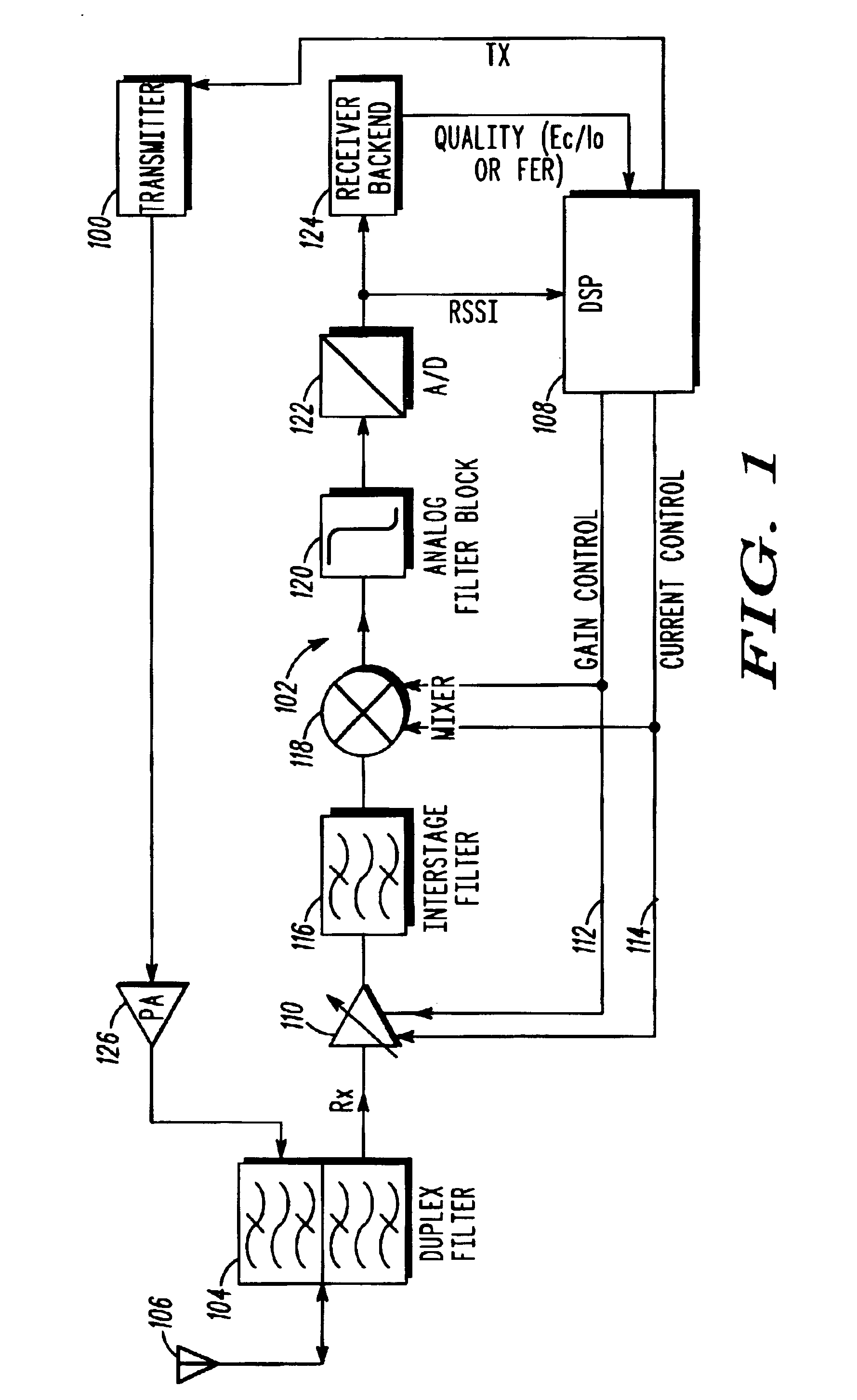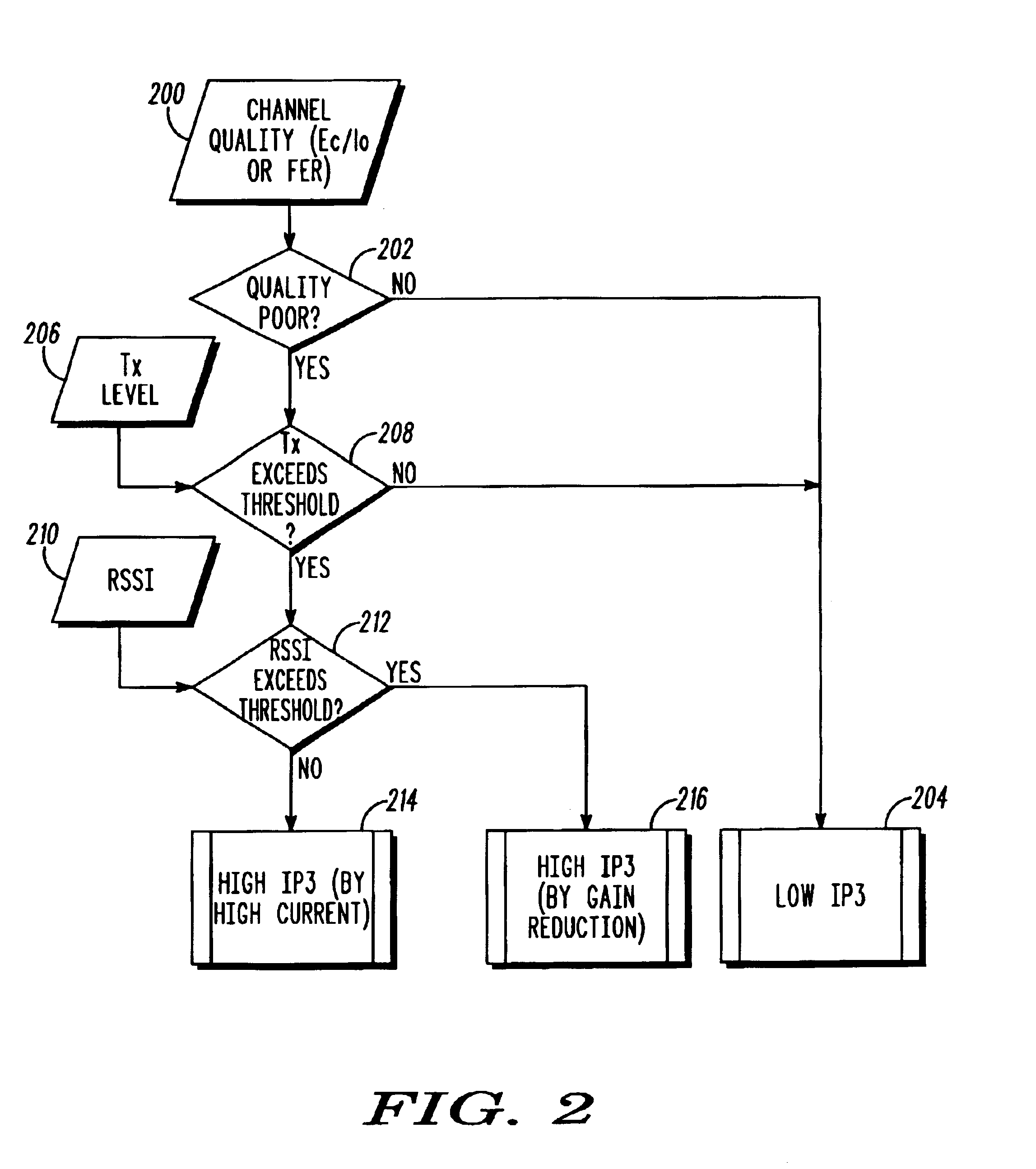Reduced crossmodulation operation of a multimode communication device
a multi-mode communication and cross-modulation technology, applied in the direction of transmission, transmission, electrically long antennas, etc., can solve the problems of cross-modulation, intermodulation distortion, network system penalized in capacity loss,
- Summary
- Abstract
- Description
- Claims
- Application Information
AI Technical Summary
Problems solved by technology
Method used
Image
Examples
Embodiment Construction
[0019]The present invention provides a unique method to improve reception in a multimode receiver circuit for a wireless communications device in a communication system. The invention also addresses compressed, uncompressed, and GSM modes of operation. In particular, the present invention reduces the effects of intermodulation distortion from crossmodulation by improving linearity of the receiver only when intermodulation is detected or anticipated, and while allowing operation in uncompressed mode, thereby improving data throughput. This improvement is accomplished without any significant additional hardware or cost in the communication device. Instead of incorporating high linearity circuitry, which in turn adds cost and increases current drain, the present invention advantageously utilizes the existing circuitry in combination with solutions for processing of the RF input signals necessary in a multimode communication device. This invention further allows selective operation in c...
PUM
 Login to View More
Login to View More Abstract
Description
Claims
Application Information
 Login to View More
Login to View More - R&D
- Intellectual Property
- Life Sciences
- Materials
- Tech Scout
- Unparalleled Data Quality
- Higher Quality Content
- 60% Fewer Hallucinations
Browse by: Latest US Patents, China's latest patents, Technical Efficacy Thesaurus, Application Domain, Technology Topic, Popular Technical Reports.
© 2025 PatSnap. All rights reserved.Legal|Privacy policy|Modern Slavery Act Transparency Statement|Sitemap|About US| Contact US: help@patsnap.com



